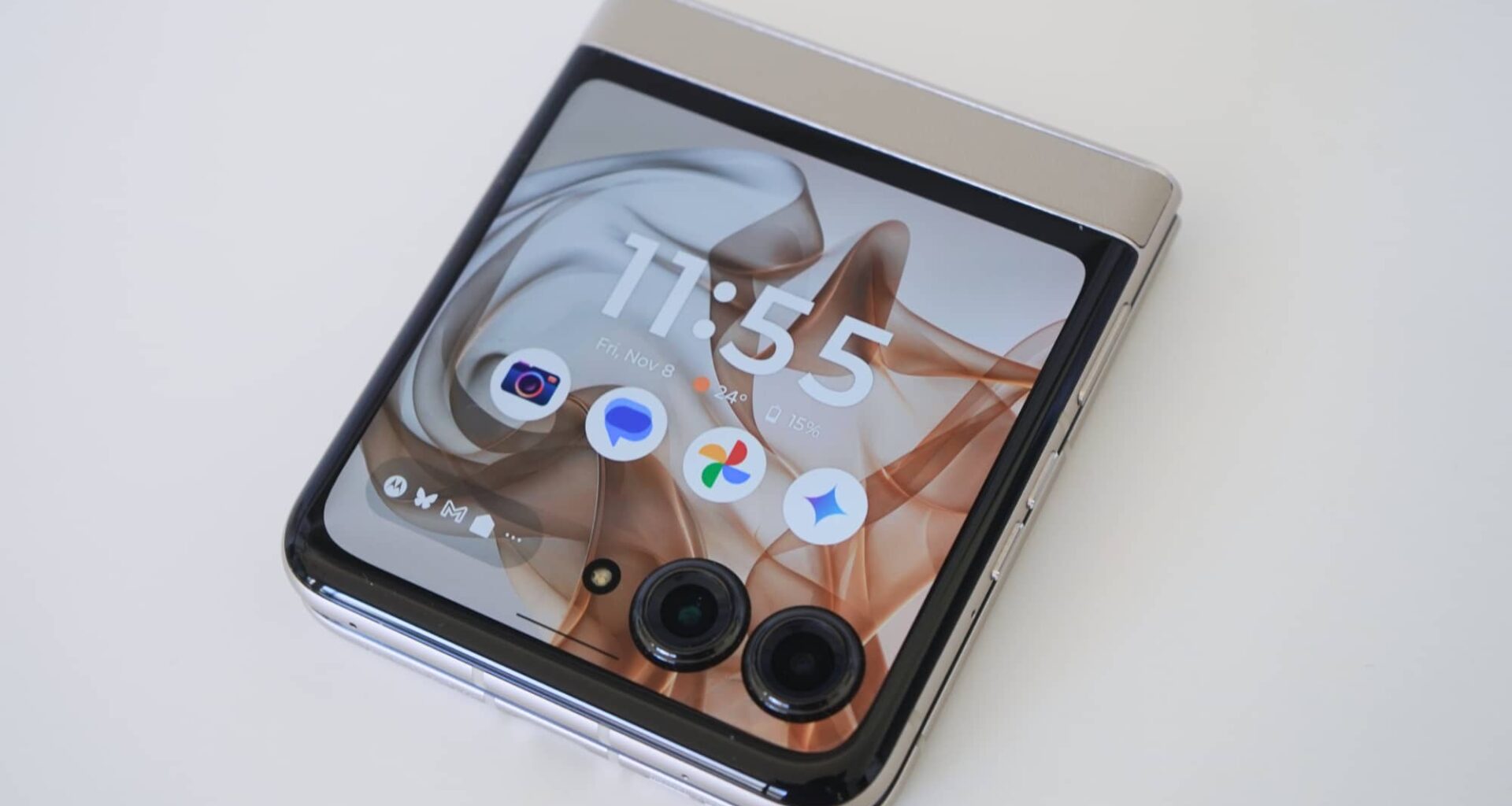Quick review
The good
The not-so-good
Foldable phones are getting less expensive, which is great news for consumers. Motorola’s latest is the standard Razr 50, a model which reminds us of the past, yet looks to the future with a more compelling price. Is it worth it?
Born from the shell and design of last year’s excellent Razr 40 Ultra, the standard Razr 50 seems like a great idea on paper: the same excellent design, the same big cover screen, but a lower price than this year’s Razr 50 Ultra.
Priced at $1199 compared with the $1699 of the more expensive model, Motorola is effectively offering a more budget-focused take on the foldable tech. The idea is the same, complete with the large cover screen and mini version of Android found there, but you’re getting a reduction in tech.
But after playing with the sans-Ultra model, you can see where Motorola skimped, and the result may not be worth the savings. You might just want to keep saving instead of getting something less solid in the first place.
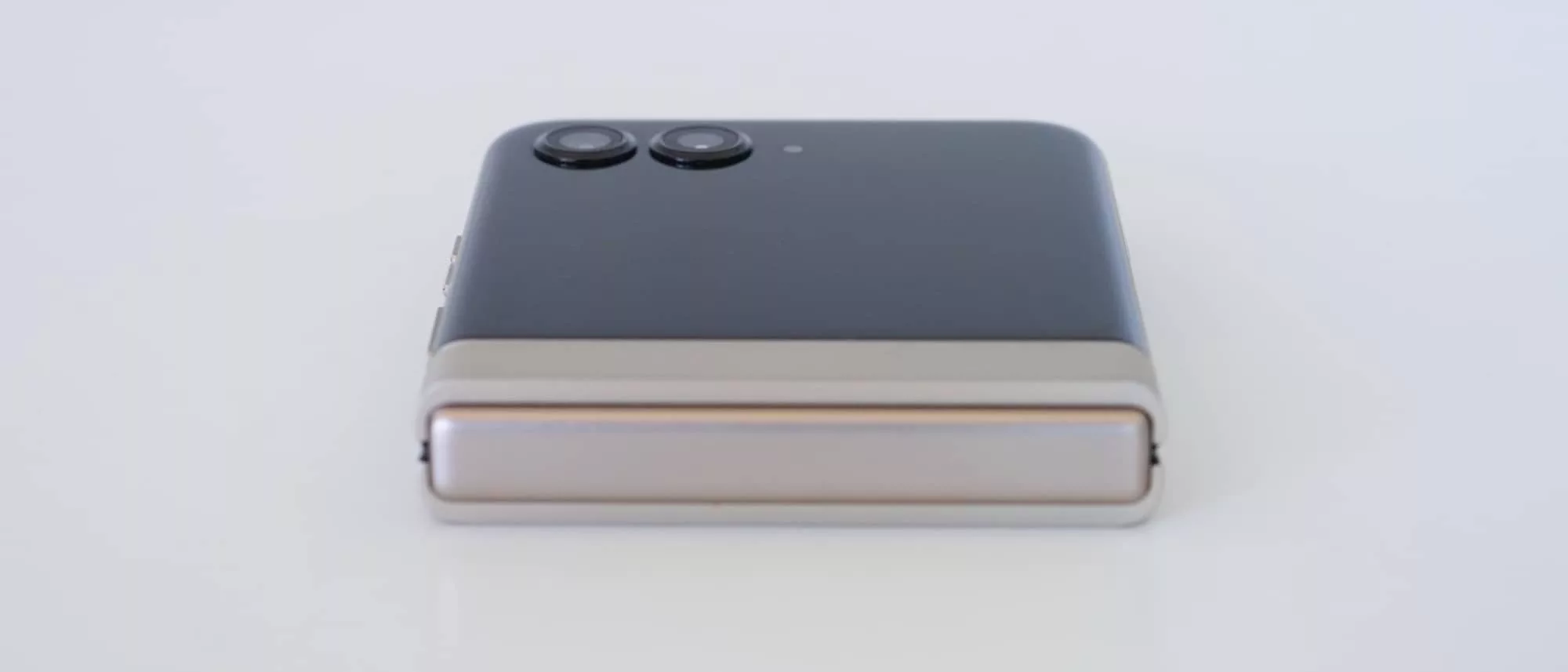
Design
First up, let’s touch on design, because it’s one of the areas Motorola has kept the same this year and last across its models.
We saw it on the 40 Ultra and the 50 Ultra this year, and it’s near identical on this model wedged between both.
On the standard Razr 50, there’s a large cover 3.6 inch pOLED screen on the front, a foldable screen on the inside that opens up even larger again to reveal a 6.9 inch pOLED display, and a textured back to make things that much easier to grip.
The frame is a curved aluminium alloy, adopting a more muted look than the shiny versions we’ve seen on more expensive siblings, kind of like the difference between the iPhone 16 and the more expensive Pro offerings.
However, the look and feel are otherwise identical. The phone measures 188 grams, the thickness is 7.25mm thin open and near double closed (15.85mm). It’s a compact device that looks great, and can be used closed or open. It’s clever.
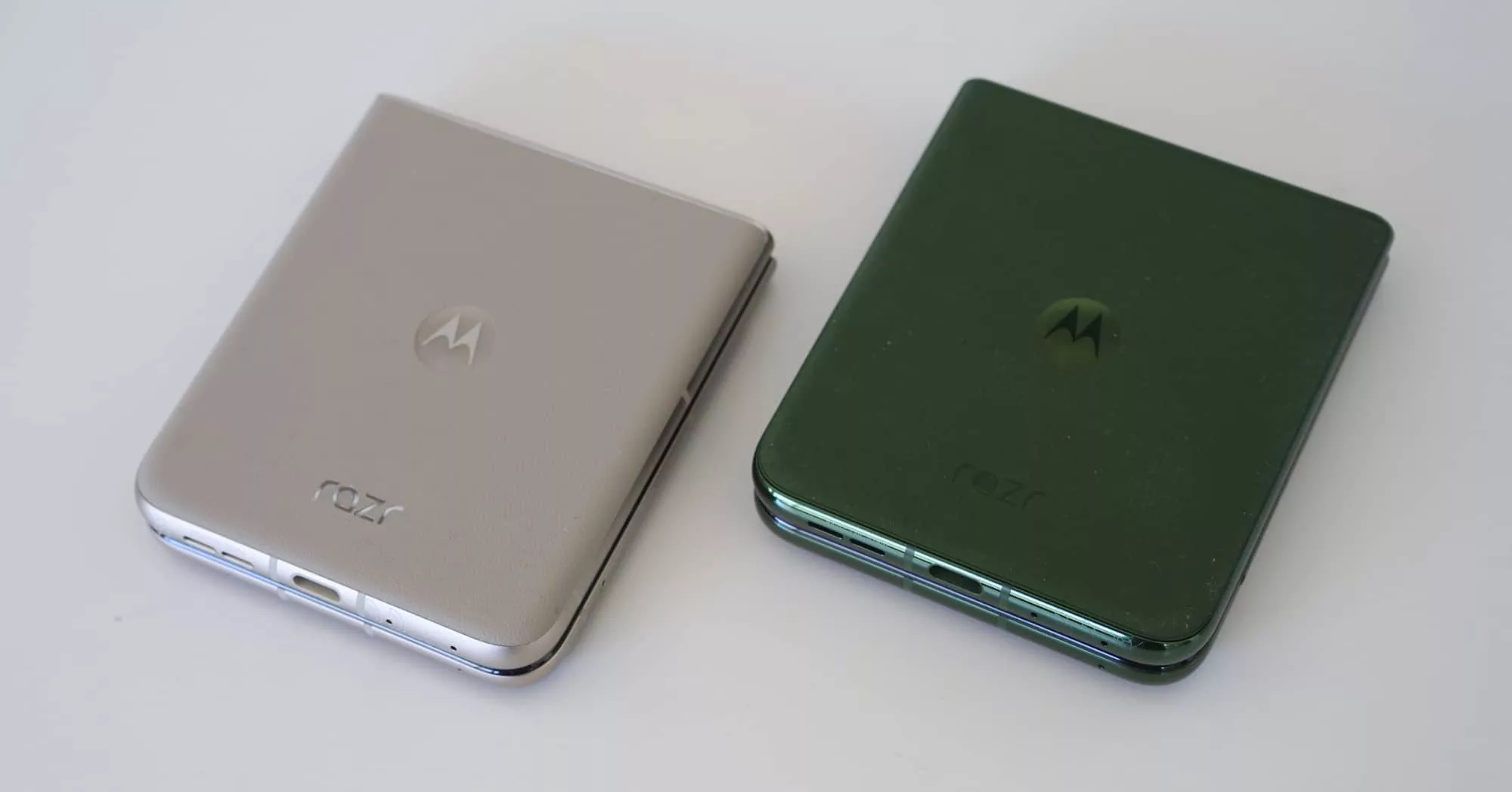
Features
On the inside, you can expect Google’s Android 14 out of the box, likely with 15 to come, while the chip is a different experience from the other models Moto has released.
Instead of a Qualcomm Snapdragon, Motorola has opted for a MediaTek Dimensity 7300X chip, a variant of a mid-range chip we’ve seen before, and one that could help keep the price down for the handset. It arrives alongside 8GB RAM and 256GB storage, too.
Much of the hardware will feel relatively solid for a phone fetching near the thousand dollar mark, or just beyond it.

There’s a 50 megapixel F1.7 wide camera mostly running in a 12 megapixel mode, alongside a 13 megapixel F2.2 ultra-wide camera. Meanwhile, the inside gets a 32 megapixel selfie-camera mostly running at 8 megapixels.
You won’t find a dedicated headphone jack here — they are largely a thing of the page — but there is the one USB-C port at the bottom for charging, data, transfers, and even wired audio if you have a converter, while wireless is catered for using Bluetooth 5.4, 5G, WiFi, GPS, and Near-Field Communication (NFC) for Google Pay.
Atop all of this is two screens, one of which is foldable.
On the inside, expect to find a 6.9 inch folding pOLED display running the Full HD+ resolution of 2640×1080 at a maximum of 120Hz, while the external display is a 3.6 inch pOLED display running 1056×1066 at a maximum of 90Hz.
Motorola has included a degree of water resistance using IPX8 certification (water resistance, no dust protection), wireless charging, and a fingerprint sensor on the flat power button on the right. The battery is rated for 4200mAh, and isn’t removable.
| Model | Motorola Razr 50 (XT-2453-1) |
| Chip | MediaTek Dimension 7300X |
| RAM/Storage | 8GB RAM; 256GB |
| Display | Cover: 3.6 inch pOLED Inside: 6.9 inch pOLED |
| OS | Android 14 |
| Cameras | 50mp wide F1.7, 13mp ultra-wide F2.2 |
| Connections | 5G (sub-6), WiFi 6, Bluetooth 5.3, GPS, NFC, USB-C |
| Size/Weight | 7.25mm open, 15.85mm closed; 188g |
| Price | $1199 AUD |
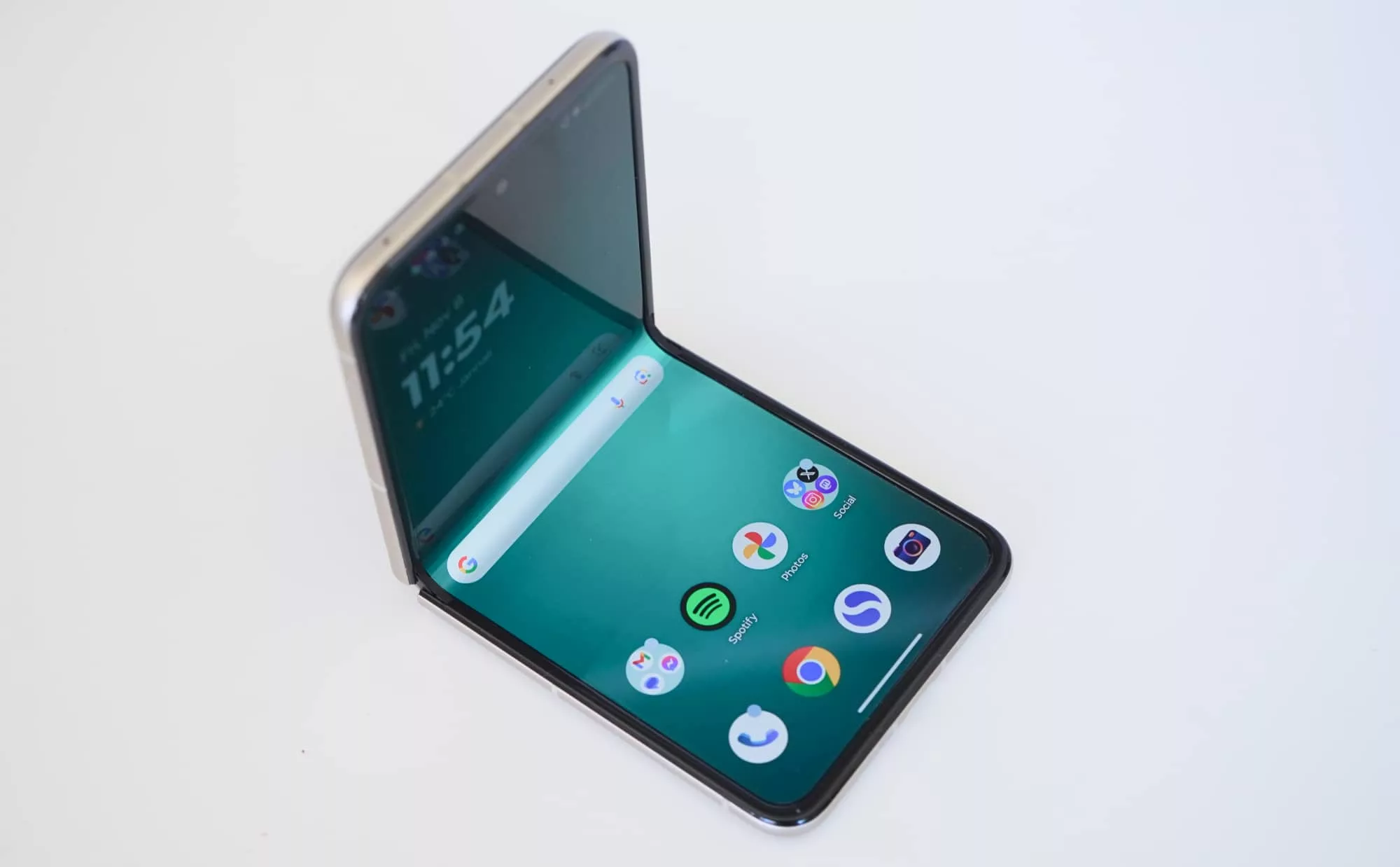
In-use
Flip open the phone and you should see it spring to life, though there may be the spot of lag in that process. It does happen, possibly a little too often with this phone, but a second or two later, the Razr 50 is back to its tricks, letting you use it.
Android on the Razr 50 is pretty much exactly the way we’ve experienced it on the current crop of Razr phones, offering a smaller Android cover screen with compact apps you can control on the tiny screen as distinct to the widgets of the Samsung Flip 5 and Flip 6, while the inside is the typical large screen Android experience you’re probably used to.
The “extras” that make a Motorola phone a little bit different are here, such as the camera shake gesture to launch your camera, as well as a degree of AI, as well.
For a phone in 2024, it’s all pretty standard stuff.

Performance
The performance is where things get a bit sticky for the Razr 50, because you may find it just doesn’t live up to where its siblings have.
Rather than just provide the same hardware from the 40 Ultra before it, Motorola’s decision to move to a totally different chip hasn’t paid off, evident from the benchmarks and our time with the phone.
Take the benchmark of the Razr 50 versus previous Moto Razr models outside of the high-end. Motorola has seen a couple of non-Ultra models so far, and given it’s not the only flip phone out, we’ve thrown in some of those, too.
Sufficed to say, the Razr 50 doesn’t have an edge, and manages to not only be slightly slower than last year’s Razr 40, but also slower than one of the first folding flip phones, the Samsung Galaxy Z Flip 5G from three years ago.
The decision to opt for a less impressive Mediatek Dimensity 7300 variant isn’t one Motorola has taken by itself. Oppo’s Reno 12 5G tried something similar this year and the result was equally abysmal.
Both phones offered mediocre performance, making them difficult to consider on performance alone.
The results just aren’t great for the Dimensity in this phone, and are just that much worse when compared to the Snapdragon used in the Razr 50 Ultra.
There’s roughly twice the performance in the 50 Ultra versus the standard 50, while gaming and graphical performance floors its underpowered sibling by a magnitude of roughly four times.
Even if you can ignore the synthetic benchmarks, you shouldn’t because the real-world performance is often quite slow, as well.
Some apps run fine, sure, but others will struggle to load, and we even found the home screen didn’t always appear when we swiped to bring the handset out of standby.
At least the 5G modem can deliver high speeds, hitting as high as 470Mbps in our tests in Sydney, but the overall system performance is clearly the struggle, and the struggle is real.
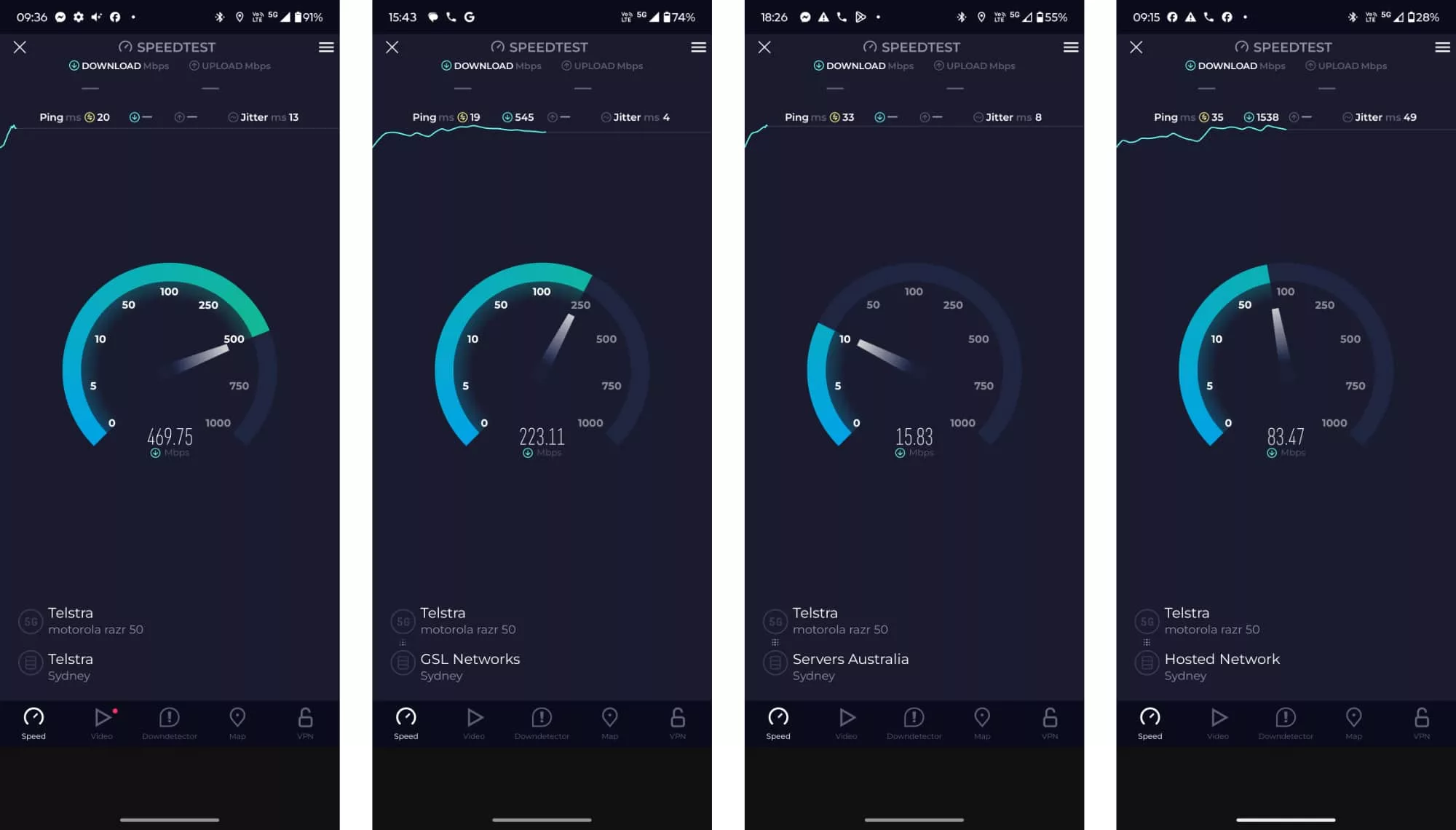
Camera
If you think the performance has issues using the phone for regular use, you’re in for a world of hurt using the camera. It’s so much worse here. So, so much worse.
The camera is technically an okay setup: 50 megapixel wide camera working closer to 13 megapixels using a quad downsample, much like the selfie camera, which is a 32 megapixel camera working at 8 megapixels. The ultra-wide bundles in macro support and runs at 13 megapixels. Easy.
Daylight images out of the phone are decent much of the time, though low-light isn’t great. It’s an acceptable camera in daylight, but needs some assistance at night. That’s all fairly normal, we’d say.





However the speed of the camera makes the Razr 50 unreliable at the best of times, and less useful at other times.
The camera can struggle to fire a shot regardless of the button you press, on-screen or physical volume key, and when it does, you may find the system struggled to capture it sharply. Blurry images can be too much the norm, while crystal clear shots seem to be more of a rarity.
Battery
By comparison, the battery life is downright decent, managing a full 24 hours of life in our real-world usage test, where we end up physically using the Razr 50 as our phone.
Testing it over the course of several days, we found a full day was fairly easy, though most people would likely charge nightly.
The more you use the phone, the more the battery drains. That’s to be expected, obviously. However, the inclusion of the cover screen means you might rely on the smaller display at the front, which can help stave off the battery even more.
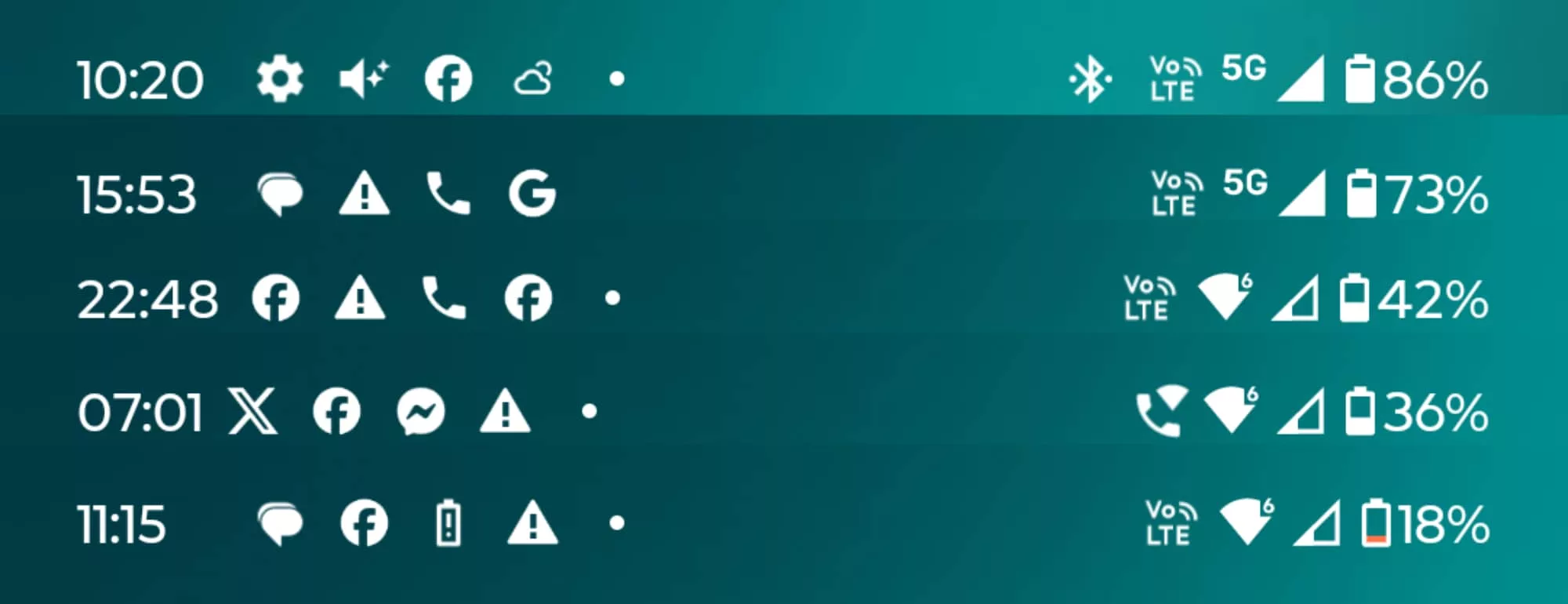
Value
The most interesting aspect of the package is the price, which sees a $500 lower price in Australia, fetching $1199 for the model of Razr 50 that misses out on the “ultra” branding.
Given that foldable phones typically command a price tag past the $1500 mark, particularly new models, the Moto Razr 50 technically represents some value, at least on paper. Though it’s also more expensive than the $999 Razr 40 from last year without any major reason why, and the performance is arguably the same if not worse.
What we love
And look, we’re big fans of what the Razr 50 standard model (sans-Ultra) represents from an idea level: a less expensive folding phone based on an established and previously awarded handset.
Folding phones are great for size and usability, particularly because they’re a nod back to the way phones used to be. Like the old clamshell phones of the past, you can even flip open the phone when you’re getting a call, and provided the phone isn’t having a senior moment, it will take the call, too.
As it is, the current crop of foldable phones are genuine fun. Last year’s Razr 40 Ultra — which this model is based on — was one of Pickr’s Best Phones of 2023, and so the Razr 50 standard should be as good as its Razr 40 predecessor.

What needs work?
We say should because it unfortunately is not, and the phone just doesn’t hit any stride.
The design is there, the cover screen is still clever, but the phone’s dismal performance makes it a real slog to run.
Between never knowing whether the phone itself will respond to your actions properly, and then realising that the camera will basically struggle to let you fire a shot, your time with the Razr 50 will likely be an awkward and cumbersome experience where you’re screaming at Motorola remotely wondering how no one picked up on these problems.
When the Moto Razr 50 works, it’s a treat. It’s a slightly less expensive take on the flagship Ultra model. Unfortunately, the “when it works” component is so difficult to manage, that it lets down the rest of the package.
It’s not a great experience, and we’re fairly sure the processor is to blame.

Final thoughts (TLDR)
It’s a shame, too, because the Razr 50 could have been a whole lot better. It had the template nailed: older flagship with a different chip.
There’s enough of a difference between the 40 Ultra and the 50 Ultra thanks to the changes in cameras and cover screen that Motorola could have pulled this off brilliantly. It just didn’t. It compromised on the processor, which unfortunately lets down the rest of the package.
The thing is we could totally be wrong. It might not be the processor, or might not just be it. The problem is we’re stunned the problems of speed and performance made it into a release product. It’s entirely possible that Motorola could still massage the whole thing and make it better — over-the-air updates can improve devices post-launch. But right now, that’s exactly what the Razr 50 needs.
In short, the Razr 50 needs to perform like a thousand dollar device, not one marketed for a lot less.
When Motorola can do that — when it can get the Razr 50 to perform well — this phone will be a foldable made almost affordable. Until then, it’s an idea half-realised.
It’s a shame, too, as the $1699 Razr 50 Ultra is easily one of our favourite devices this year, and a shoe-in for an award. Frankly, we’d rather spend the extra $500 and get a far superior phone to the $1199 Razr 50 standard, and you should, too.



